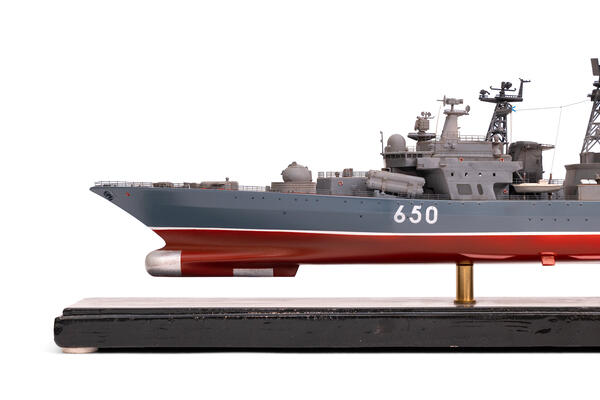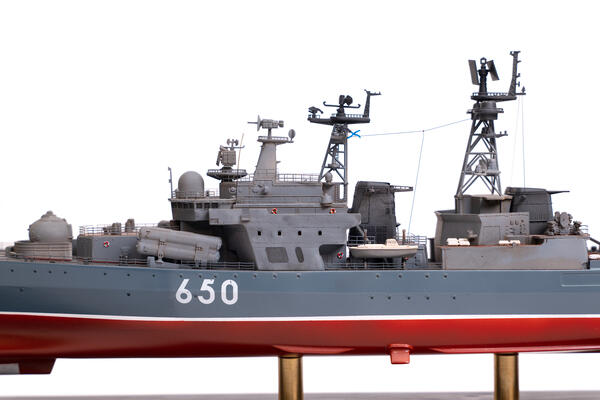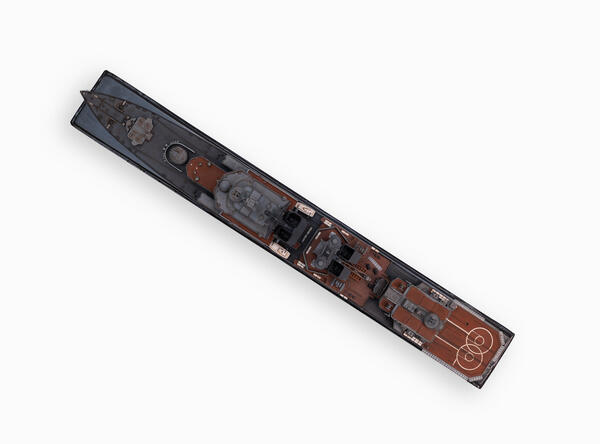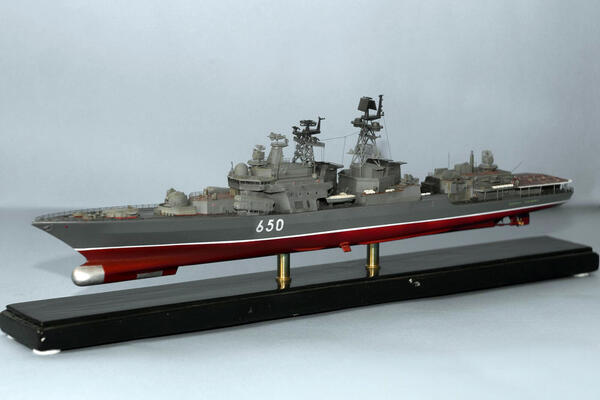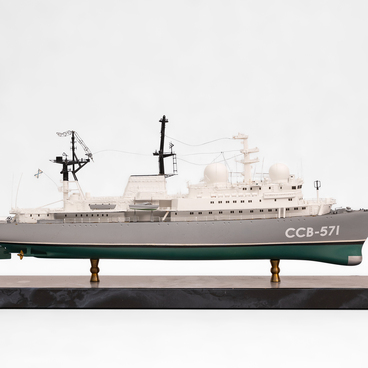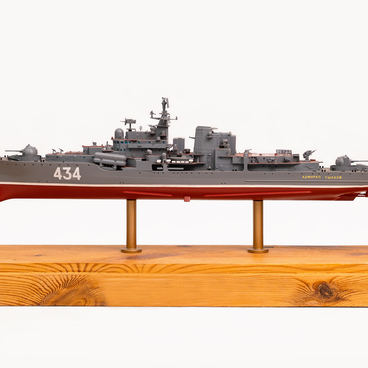“Admiral Chabanenko” is a Soviet and Russian large anti-submarine destroyer with guided missiles suitable for operations in the off-shore maritime and ocean zones. Named after Soviet Admiral Andrei Trofimovich Chabanenko, this ship was designed to perform a wide range of tasks. These include combating enemy underwater and surface forces, providing air defense and support for amphibious warfare.
The ship’s design was developed in the late 1980s, when attempts were made to eliminate the shortcomings of previous models of large anti-submarine destroyers. Laid down at the Leningrad Shipyard in 1988, the Admiral Chabanenko destroyer was launched in 1992. Due to financial problems, she entered service with the Russian fleet only in 1999.
The Admiral Chabanenko participated in joint exercises with other countries and ensured the safety of civil navigation in various regions of the world. The vessel protected the site of the Kursk disaster: when the sunken nuclear submarine K-141 Kursk was being raised from the seabed of the sea, the Admiral Chabanenko spent 178 days at sea in that area. Following the results of the summer training period in 2002, the destroyer was recognized as the best ship of the Northern Fleet. She was the first Russian warship to enter the Panama Canal since World War II.
Currently, since April 2014, the ship has been under repair at the CP3-35 berth. The repairs are scheduled to be completed in 2025. After modernization, the Admiral Chabanenko will become a frigate and will receive advanced missile armament.

